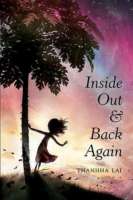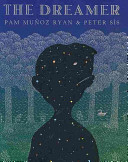The Heart of Literature is Conversation
Esmeralda Carini
I am passionate about literature, especially children’s literature that is rich and reflective of the human experiences we all share. My belief is that rich literature connects us to each other. It opens our hearts and minds to the similarities and differences between us, gives us hope, and sometimes helps us to find solutions for moving forward together in life’s journey. By exploring children’s literature that focuses on diverse cultures and is reflective of the interconnectedness of society, we support the principles of a democratic society. “Education is about life and the world around us. It helps individuals to realize their full potential and to become productive members of their communities” (Suh & Samuel, 2001, p.1).
As a content literacy specialist I take joy in sharing my passion for stories that value a diversity of experiences and celebrates our common humanity with the children and teachers I work with on a daily basis. Wanting to inform my understanding of sharing children’s literature in a balanced literacy framework, I became part of the Teacher Talk professional community who gathers together to discuss children’s literature, literacy and best practice. Conversations with these colleagues about books that represent the diversity of cultures and experiences found both within and outside the United States gave me direction for building Professional Development workshops for the inservice teachers I work with in Hawaii.
 Through these Professional Development workshops, I had an opportunity to engage in literature discussions of multicultural texts with the teachers who live and teach in the Kailua/Kalaheo complex. During our literature discussions we began a dialogue about what multicultural literature is and how it can be a tool to impact student learning. In addition to introducing new literature response strategies to these inservice teachers, I wanted to address how multicultural literature gives way to higher level thinking and provides an opening for students to explore their own assumptions and life experiences. The two primary books we discussed were The Dreamer (Ryan, 2010) and Inside Out & Back Again (Lai, 2011); these books are particularly appropriate for upper elementary/intermediate grades. I was able to make available copies of these books for these participating teachers’ classroom use and libraries.
Through these Professional Development workshops, I had an opportunity to engage in literature discussions of multicultural texts with the teachers who live and teach in the Kailua/Kalaheo complex. During our literature discussions we began a dialogue about what multicultural literature is and how it can be a tool to impact student learning. In addition to introducing new literature response strategies to these inservice teachers, I wanted to address how multicultural literature gives way to higher level thinking and provides an opening for students to explore their own assumptions and life experiences. The two primary books we discussed were The Dreamer (Ryan, 2010) and Inside Out & Back Again (Lai, 2011); these books are particularly appropriate for upper elementary/intermediate grades. I was able to make available copies of these books for these participating teachers’ classroom use and libraries.
 Several of the teachers used at least one of the texts as a read aloud selection with their classes. Those that selected The Dreamer (Ryan, 2012) shared that they felt it had some contextual themes that their students could not connect to. Specifically, they shared that the complex family dynamics of the characters, the turn of the century setting, and the boy’s fear of the ocean were obstacles for them as Hawaiians when making text-to-self connections. It was difficult for these teachers to connect this literature response strategy for building comprehension to the kind of literature conversation that connects our students to each other and the greater world around them. In contrast, the teachers who selected Inside Out & Back Again (Lai, 2011) felt that it was a perfect text to share with their students. They shared that both they and their students particularly related to the protagonist’s cultural heritage; which, as Southeast Asian, is well represented in Hawaii’s diverse community. Multicultural literature connects students to each other, not just by nurturing our students’ awareness and empathy for other ways of being in the world, but also by starting conversations about our common human experiences; however, beginning these conversations and scaffolding inservice teachers into this kind of dialogue has been more challenging than I anticipated.
Several of the teachers used at least one of the texts as a read aloud selection with their classes. Those that selected The Dreamer (Ryan, 2012) shared that they felt it had some contextual themes that their students could not connect to. Specifically, they shared that the complex family dynamics of the characters, the turn of the century setting, and the boy’s fear of the ocean were obstacles for them as Hawaiians when making text-to-self connections. It was difficult for these teachers to connect this literature response strategy for building comprehension to the kind of literature conversation that connects our students to each other and the greater world around them. In contrast, the teachers who selected Inside Out & Back Again (Lai, 2011) felt that it was a perfect text to share with their students. They shared that both they and their students particularly related to the protagonist’s cultural heritage; which, as Southeast Asian, is well represented in Hawaii’s diverse community. Multicultural literature connects students to each other, not just by nurturing our students’ awareness and empathy for other ways of being in the world, but also by starting conversations about our common human experiences; however, beginning these conversations and scaffolding inservice teachers into this kind of dialogue has been more challenging than I anticipated.
After a year of participating in a professional literacy community, I have learned that the true heart of literature is conversation and that discussion of children’s literature is just as important for teachers as it is for our students. I have rediscovered the joy of sharing rich literature; reading with colleagues and getting excited about “jewels” in children’s literature. These discoveries have informed my Professional Development workshops and I will continue to look for new ways to respond to literature in the classroom. I would like to pass on to teachers comprehension strategies that lend themselves to opening the kind of rich discussion that supports concepts of tolerance, diversity and acceptance of all. It is the perceptions, the responses, and personal connections that we make with texts as well as our conversations with others that really bring stories to life. And that helps us all to connect to the human experiences we share in life.
Downloadable engagements related to Inside Out and Back Again:
Save the Last Word for Me
Placing Students in a Story Context lesson
Literature Response Sheet
References
Lai, T. (2011). Inside out & back again. New York: Harper.
Ryan, P. (2010). The dreamer. New York: Scholastic.
Suh, B. & Samuel, F. (2011). The value of multiculturalism in a global village: In the context of teaching children’s literature. The NERA Journal, (4), 1-7.
Esmeralda Carini is a district Literacy Content Specialist in Kaneohe, Hawaii.
WOW Stories, Volume IV, Issue 3 by Worlds of Words is licensed under a Creative Commons Attribution-NonCommercial-ShareAlike 4.0 International License.
Based on a work at https://wowlit.org/on-line-publications/stories/iv3/.

I have only just begun to explore your work on this webpage but am so interested in delving deeper and applying some of this work in my own practice. The text sets, materials, and activities you have posted are very informative and helpful. You have done a lot of research and leg work that many classroom teachers are not able to do AND provided a guide for those of us who would like to engage in this type process.
Your packet on Burma is especially interesting to me as I work with a large population of Burmese refugees.
Thank you for sharing your work.
I am interested to know how your reading specialists fit into this exploration?
Thank you again,
Maggie Burns